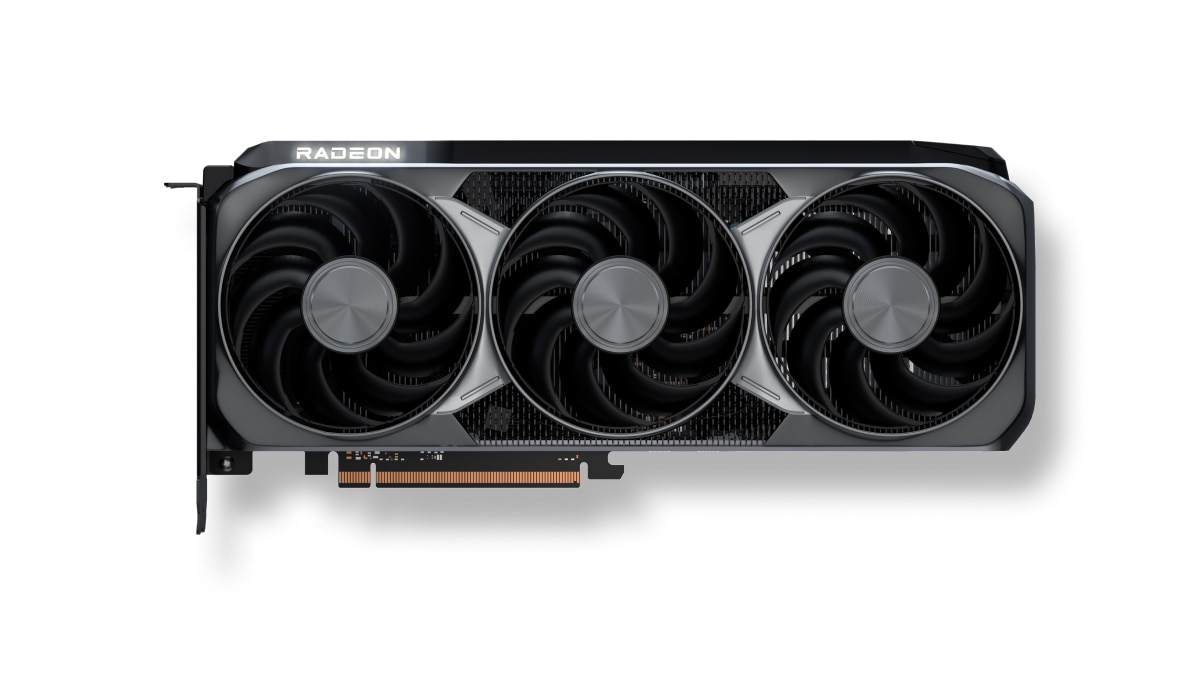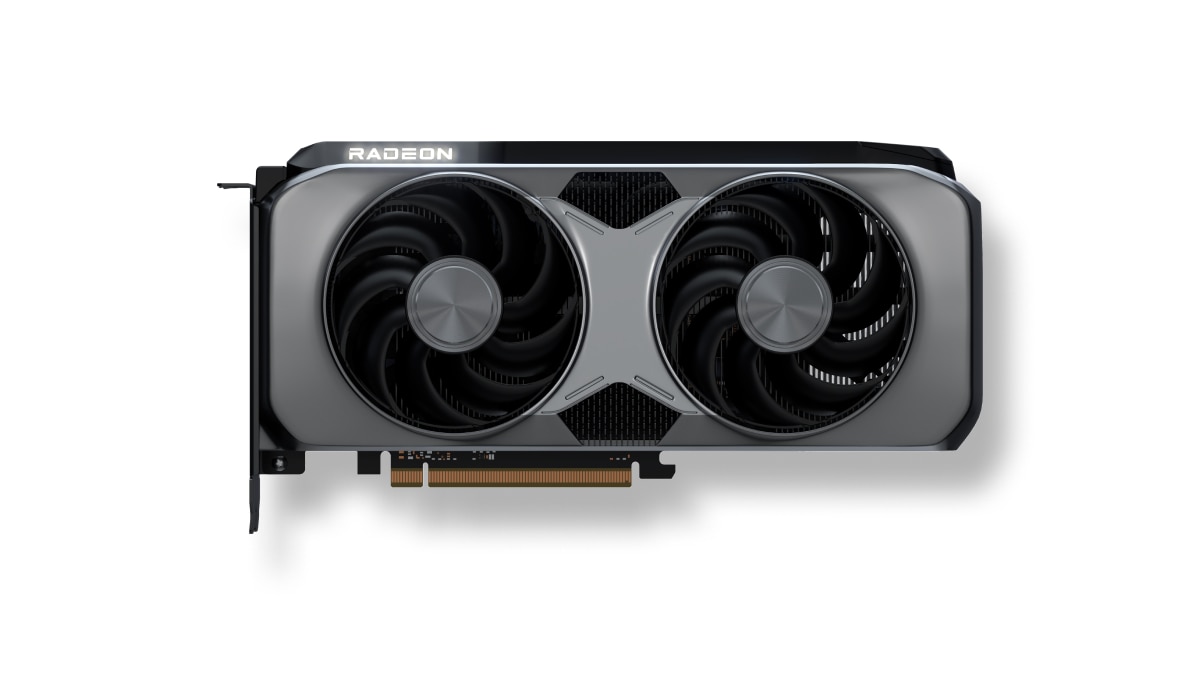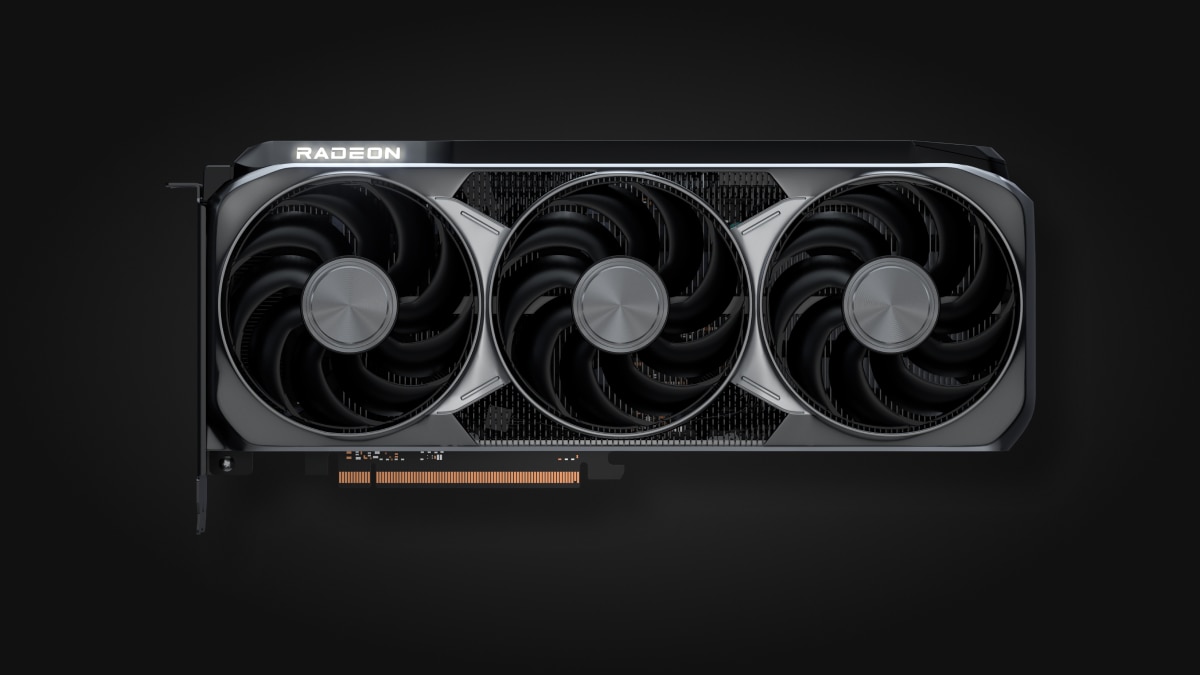AMD’s recent launch of the Radeon RX 9070 series has led to significant market share gains in Japan. Based on recent reports, AMD has reached a 45% GPU market share in the country, marking an all-time high for the company. This impressive growth demonstrates how AMD’s newest graphics cards are successfully challenging Nvidia’s dominance in certain regional markets.
The company claims its Radeon RX 9070 XT offers 23% better cost-effectiveness compared to the competing GeForce RTX 5070 Ti. This value proposition appears to be resonating with Japanese consumers who are increasingly choosing AMD products. The rapid market share growth suggests AMD’s strategy of offering competitive performance at attractive price points is working well in specific regions.
Some reports indicate AMD may have implemented a “biased distribution” system for the RX 9070 series among board partners. There are also rumors of potential price increases after the first batch of cards is sold. These factors could impact AMD’s continued market share growth in the coming months.

A Promising Turnaround for Radeon GPUs
For years, AMD’s Radeon graphics cards have played catch-up with NVIDIA in the gaming GPU market. But the tide may finally be turning. Following the launch of the Radeon RX 9070 and RX 9070 XT, AMD is reporting significant market share gains in key regions. One standout example is Japan, where AMD claims its gaming GPU market share has reached 45%—a milestone the company admits it isn’t entirely accustomed to hitting. Whether this signals a long-term shift in consumer preference or just a well-executed product cycle remains to be seen, but it’s clear that Radeon is gaining ground.
Why the RX 9070 Series Is Winning Over Gamers
The RX 9070 and RX 9070 XT have hit a sweet spot in terms of price-to-performance ratio. Unlike the top-tier RX 9000 XTX models aimed at enthusiasts, the 9070 series appeals to a broader audience. It delivers high-end 1440p performance, solid ray tracing capabilities, and efficient power consumption—without breaking the bank.
One of the key factors in the RX 9070’s success is its VRAM configuration. Offering 16GB of GDDR6 memory on a 256-bit bus, the card addresses a major pain point for gamers worried about future-proofing. With modern games like The Last of Us Part I, Hogwarts Legacy, and Alan Wake 2 consuming more VRAM than ever, AMD’s generous memory allocation is reassuring to prospective buyers.
Thermal performance has also improved. The RX 9070 runs cooler than its predecessor, thanks to an optimized RDNA 3.5 architecture and refined chiplet design. Even under heavy loads, fan noise is noticeably lower than previous Radeon cards—a big win for gamers sensitive to acoustics.
Market Share Gains: More Than Just Hype?
The reported 45% GPU market share in Japan is impressive. Historically, NVIDIA has dominated the Japanese market, making AMD’s recent gains particularly notable. This growth appears to be driven by a combination of competitive pricing, strong availability, and increasing consumer trust in Radeon hardware. Anecdotally, retailers in Japan have reported increased foot traffic specifically asking for RX 9070 series cards.
Other regions are showing signs of momentum as well. In Germany and parts of Europe, AMD has climbed to nearly 30% of the discrete GPU market—up from its previous low-20% figures. While NVIDIA remains dominant globally, these regional successes could be the start of a more balanced playing field.
Pricing and Availability: A Double-Edged Sword
While demand for the RX 9070 series has been strong, it has also led to a familiar problem: price inflation. Despite AMD’s suggested retail pricing of $549 for the RX 9070 and $649 for the RX 9070 XT, many retailers are tacking on premiums as high as $100 or more, especially in markets where availability is limited. This could dampen AMD’s sales momentum if left unchecked.
That said, AMD has hinted at plans to increase supply in the coming months. Production yields on their RDNA 3.5 GPUs are reportedly healthy, and if AMD can maintain steady shipments, pricing may normalize.

Software and Features: Radeon Keeps Improving
Beyond raw hardware, AMD has continued to improve its software stack. The latest Adrenalin drivers deliver consistent day-one support for new titles and offer significant performance uplifts for older games. AMD’s FSR 3 (FidelityFX Super Resolution 3) has also expanded support, bringing frame generation to more titles—even on non-AMD hardware.
Additionally, Radeon Anti-Lag+ and HYPR-RX technologies have been refined to reduce latency and simplify user experience. Gamers who might have avoided Radeon cards in the past due to less mature software now have fewer reasons to hesitate.
Can AMD Sustain This Momentum?
The RX 9070 launch has given AMD a rare opportunity to shift perceptions and capture market share. However, sustaining this growth will be a challenge. NVIDIA isn’t standing still, with rumors of a refreshed RTX 40-series lineup and next-gen cards already circulating.
If AMD can keep delivering GPUs that balance performance, efficiency, and value—along with continued driver and software improvements—it stands a real chance to hold, or even grow, its market share. For now, though, the RX 9070 series is a genuine success story, and AMD seems to be enjoying the view from a stronger competitive position.
Key Takeaways
- AMD has reached a record 45% GPU market share in Japan following the Radeon RX 9070 series launch.
- The RX 9070 XT offers 23% better cost-effectiveness compared to Nvidia’s RTX 5070 Ti according to AMD.
- Distribution strategies and potential price increases may affect AMD’s market position in the coming months.
AMD Radeon RX 9070 Launch and Impact on Market Share
AMD’s recent Radeon RX 9070 series launch has dramatically shifted GPU market dynamics, particularly in Japan where the company has reached a reported 45% market share. This represents a significant milestone for AMD’s graphics division as they compete directly with Nvidia’s RTX 50 series.
Market Share Dynamics Post RX 9070 Launch
AMD has achieved unprecedented success in certain regions following the Radeon RX 9070 series launch. In Japan, the company now claims a 45% market share, marking their highest position ever in this competitive market.
This surge reflects strong consumer reception to the new graphics cards. The rapid adoption suggests AMD has successfully positioned its products to meet current gamer demands.
Market analysts note this growth comes at a critical time when global GPU competition has intensified. The RX 9070 family appears to have resonated particularly well with mid-range and enthusiast segments.
AMD marketing managers have highlighted this achievement as proof of their improving competitive position against industry leader Nvidia.
Comparative Analysis with Nvidia’s Offerings
The Radeon RX 9070 XT specifically offers 23% better cost-effectiveness compared to Nvidia’s GeForce RTX 5070 Ti, according to AMD’s own benchmarks. This value proposition seems to be a key factor driving market share growth.
Price-to-performance ratio remains a critical consideration for many GPU buyers. AMD has positioned the RX 9070 series to exploit this consumer priority effectively.
Nvidia still maintains overall market leadership globally with their RTX 50 series. However, AMD’s targeted approach in specific regions demonstrates a strategic focus on markets where they can maximize impact.
Graphics performance metrics between competing cards show AMD closing technical gaps that previously existed. This improvement, combined with competitive pricing, creates a compelling alternative for gamers seeking high performance without premium costs.
Technological Advancements in RX 9070 Series
The RX 9070 series brings significant technological improvements that have helped drive AMD’s market share growth. These new GPUs showcase AMD’s latest architecture alongside enhanced performance capabilities and new AI features.
RDNA 4 Architecture and FSR 4
The RX 9070 series is built on AMD’s new RDNA 4 architecture, which delivers better power efficiency compared to previous generations. This architecture uses a smaller manufacturing process that packs more transistors into the same space, allowing for faster speeds without increasing power consumption.
FSR 4 (FidelityFX Super Resolution) is a major upgrade in this generation. This technology upscales games from lower resolutions to deliver higher frame rates without sacrificing much visual quality. Unlike earlier versions, FSR 4 uses AI algorithms to improve image quality during upscaling.
The memory system has also been enhanced with faster GDDR6 modules and a wider memory bus. This gives the 9070 series more bandwidth to handle complex game textures and high-resolution content.
Performance Benchmarks and Gaming Experience
The RX 9070 series shows impressive gains in real-world performance tests. Benchmark results indicate 30-40% improvements over the previous generation at similar price points. The standard 9070 model performs well at 1440p resolution, while the 9070 XT variant handles 4K gaming with steady frame rates.
These cards excel in modern titles like Cyberpunk 2077 and Starfield, where they maintain smooth performance even with high settings enabled. Testing shows the 9070 XT competing directly with similar offerings from Nvidia while typically coming in at a lower price point.
Power consumption remains reasonable despite the performance gains. The cards require less cooling than previous generations, resulting in quieter operation during intense gaming sessions.
AI Integration and Ray Tracing Capabilities
AMD has significantly improved the ray tracing performance in the 9070 series. The dedicated ray tracing hardware is roughly twice as efficient as the previous generation, making realistic lighting effects more accessible to mid-range gamers.
AI acceleration is another focus area. The cards feature dedicated AI accelerators that help with both gaming and creative workloads. These accelerators power features like AMD’s answer to DLSS, improved noise reduction in games, and AI-assisted image generation tools.
Content creators benefit from these improvements through faster render times in applications like Blender and Adobe Premiere. The AI engines also help with video upscaling and image enhancement tasks that previously required more expensive hardware.
Frequently Asked Questions
AMD’s Radeon 9070 series launch has significantly impacted the company’s market position, especially in Japan where it has reached a 45% market share. The graphics cards’ competitive pricing and performance have contributed to these gains.
How has the Radeon 9070 series affected AMD’s position in the GPU market?
The Radeon 9070 series has strengthened AMD’s position in the GPU market. According to recent reports, AMD has experienced “unprecedented” demand for its Radeon 9070 and 9070 XT graphics cards.
This surge in popularity has helped AMD gain market share in competitive regions. The company’s focus on restocking these cards at MSRP (Manufacturer’s Suggested Retail Price) shows they’re capitalizing on this momentum.
Which regions have seen the most significant increase in Radeon GPU adoption?
Japan stands out as the region with the most notable increase in Radeon GPU adoption. AMD has reached a 45% GPU market share in Japan following the Radeon 9070 series launch.
This represents an all-time high for AMD in the Japanese market. The rapid gain in market share indicates Japanese consumers are responding positively to AMD’s latest graphics card offerings.
What strategies has AMD employed to boost its market share?
AMD has focused on competitive pricing strategies to boost its market share. The company highlighted that their Radeon RX 9070 XT graphics cards offer 23% better cost-effectiveness compared to NVIDIA’s GeForce RTX 5070 Ti.
Making restocking at MSRP a “priority number one” shows AMD’s commitment to maintaining this price advantage. This approach helps AMD attract budget-conscious gamers looking for good performance at lower prices.
Can AMD’s market share gains be attributed to the performance of the Radeon 9070?
The performance-to-price ratio of the Radeon 9070 series appears to be a significant factor in AMD’s market share gains. The 23% better cost-effectiveness claim against NVIDIA’s competing product suggests performance is competitive at a lower price point.
Consumers seem to be responding positively to this value proposition. The “unprecedented” demand reported by AMD indicates the performance meets consumer expectations at the offered price points.
How does AMD’s GPU market share compare to Nvidia following the 9070 launch?
While AMD has made significant gains, NVIDIA still maintains the overall market leader position. AMD’s 45% market share in Japan represents a regional success but doesn’t reflect the global market distribution.
This regional success shows AMD is capable of challenging NVIDIA in specific markets with the right products. The Radeon 9070 series appears to be narrowing the gap in certain regions.
What impact has AMD’s increased market share had on its competition?
AMD’s market share growth has likely put pressure on NVIDIA to adjust its strategies. Reports of AMD’s success with the 9070 series may influence NVIDIA’s pricing and product positioning decisions.
There are indications of potential price increases for AMD’s Radeon RX 9070 GPUs after the first batch sells out. This suggests AMD may be responding to the strong demand by adjusting its pricing strategy, which could impact competitive dynamics in the GPU market.







